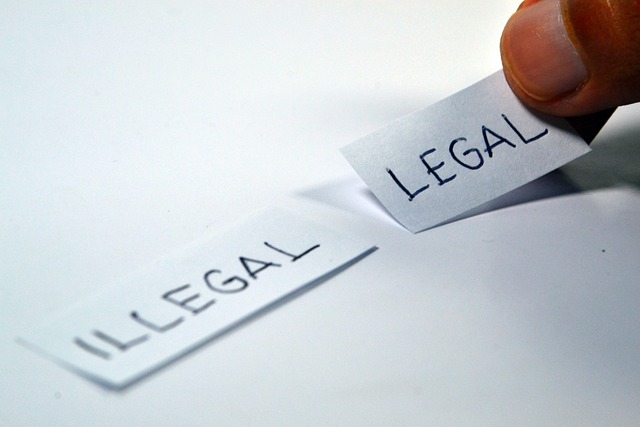Intellectual property (IP) law is a foundational aspect of protecting creative works and innovations for both individuals and businesses. It encompasses patents, which grant inventors exclusive rights to exploit their inventions for a set duration; copyrights that safeguard original literary, dramatic, musical, and artistic works; trademarks that distinguish products or services in the market; and trade secrets that offer protection to confidential business information. The courtroom plays an essential role in upholding creators' rights by resolving IP disputes and protecting their work against unauthorized use. Understanding IP law is crucial for securing your creative and economic interests, as it allows you to operate within a legal framework that incentivizes innovation and rewards creativity. Legal experts are invaluable in navigating the complexities of IP law to secure protections for your inventions and creations, ensuring they receive appropriate recognition and financial compensation when infringed upon. This robust legal framework not only safeguards proprietary interests but also fosters an environment that encourages innovation by providing clear guidelines on how property rights are protected under the law.
Navigating the complexities of intellectual property (IP) law is a pivotal step for innovators, creators, and entrepreneurs. This comprehensive guide demystifies the legal framework surrounding IP rights, delving into the anatomy of a patent, the importance of trademarking your brand, and the essentials of copyright protection. As you journey through the intricacies of property law in the courtroom, you’ll gain clarity on how to safeguard your inventions, establish a legally sound identity, and secure recognition for your original works. Whether you’re an established company or an emerging talent, understanding these principles is key to defending your creations and maintaining a competitive edge in the market.
- Navigating Intellectual Property Law: Understanding Your Rights and Protections
- The Anatomy of a Patent: Safeguarding Your Inventions in the Courtroom
- Trademarking Your Brand: A Guide to Legal Identity and Market Recognition
- Copyright Essentials: Securing Original Works and Defending Against Infringement
Navigating Intellectual Property Law: Understanding Your Rights and Protections

Navigating intellectual property law can be a complex endeavor for individuals and businesses alike. It is imperative to comprehend the types of intellectual property—patents, copyrights, trademarks, and trade secrets—and how they apply to your creations or inventions. For instance, a patent grants you the exclusive right to prevent others from making, using, or selling your invention for a limited period. Similarly, copyright protects original works of authorship, while trademarks safeguard symbols, names, or slogans used to identify and distinguish products or services in the marketplace. The courtroom is a critical arena where intellectual property disputes are settled, ensuring that creators’ rights are upheld and their innovations are protected against unauthorized use. Understanding your rights under intellectual property law is essential for safeguarding your creative and economic interests, as it provides a framework within which you can operate with confidence, knowing that your unique contributions can be legally defended. Engaging with legal experts to navigate this landscape is advisable, as they can guide you through the process of securing protections for your intellectual property.
The Anatomy of a Patent: Safeguarding Your Inventions in the Courtroom

Understanding the intricacies of intellectual property (IP) rights is paramount for inventors and businesses alike. A patent, a form of IP protection, legally safeguards an invention, granting the creator exclusive rights to use, manufacture, and sell the invention for a set period. This legal framework not only incentivizes innovation by providing a temporal monopoly but also secures the investment made in research and development. In the courtroom, these protections are robustly defended. When disputes arise over patent infringement, the judicial system meticulously examines the claims, specifications, and drawings that define the scope of the patented invention. The enforcement of a patent in a legal setting ensures that the rights of the patent holder are respected and upheld against alleged infringers, thereby maintaining the integrity of the intellectual property law and the incentive structure for future innovation. Legal experts in IP rights navigate the complex statutes and precedents to provide strategic counsel, ensuring that inventors can confidently bring their creations from concept to commercialization without unauthorized duplication or exploitation by competitors. This not only protects the proprietary aspects of the invention but also fosters an environment where innovation thrives, as creators are assured that their intellectual property is secure and valued under the law.
Trademarking Your Brand: A Guide to Legal Identity and Market Recognition

navigating the realm of intellectual property rights is a critical step for any business looking to establish a legal identity and gain market recognition. Trademarking your brand under the law is not merely about safeguarding a name or logo; it’s a foundational action that secures your place within the competitive landscape. A well-crafted trademark acts as a beacon, distinguishing your offerings from those of others and fostering customer loyalty. To initiate this process, one must diligently research existing trademarks to ensure originality and then file an application with the relevant authorities. This formal recognition underpins your brand’s uniqueness in the courtroom and the marketplace alike, offering a legal shield against infringement and imitation.
Once your trademark is registered, it becomes a vital component of your business’s intellectual property portfolio. The registration not only confers upon you the exclusive right to use the trademark in connection with the goods or services for which it was granted but also serves as a deterrent in the courtroom against counterfeiters and competitors who may seek to capitalize on your brand’s reputation. It is advisable to consult with a legal expert specializing in intellectual property law to navigate this process effectively, ensuring that your trademark is robustly protected and stands up to scrutiny in a court of law. This proactive approach to securing your brand’s identity can significantly enhance your business’s value and market presence.
Copyright Essentials: Securing Original Works and Defending Against Infringement

Understanding the intricacies of copyright law is pivotal for safeguarding original works and defending against infringement. A copyright, as defined by the law, offers an exclusive right to the creator of an original work, which could be a literary, musical, or artistic piece, securing their property against unauthorized use. The moment an idea is fixed in a tangible form, it becomes eligible for copyright protection; this means that authors, composers, and artists must be diligent in documenting their creations to establish clear ownership under the law.
In the event of an infringement, the courtroom serves as the battleground where the rights of copyright holders are defended. It is here that the legal framework is invoked to address breaches of property rights. The plaintiff must prove in court that the work is original, fixed in a tangible form, and that the infringement occurred; this involves a detailed examination of both the similarities and differences between the copyrighted work and the alleged infringing material. Successful litigation can result in various remedies, including injunctions to stop the infringement and monetary damages to compensate for losses sustained due to the unauthorized exploitation of the copyrighted property.
Navigating the complex landscape of intellectual property rights is a critical step for individuals and businesses alike to protect their innovations and creations. This article has demystified the key aspects of property law, from securing patents in the courtroom to trademarking your brand and copyrighting original works. Understanding these legal mechanisms not only safeguards your intellectual property but also establishes a foundation for success in various markets. By adhering to the principles outlined in ‘Navigating Intellectual Property Law,’ ‘The Anatomy of a Patent,’ ‘Trademarking Your Brand,’ and ‘Copyright Essentials,’ you can confidently assert your rights and protect your property within the legal framework. Recognizing the importance of these rights is essential for any entity looking to thrive in an increasingly competitive global marketplace.
